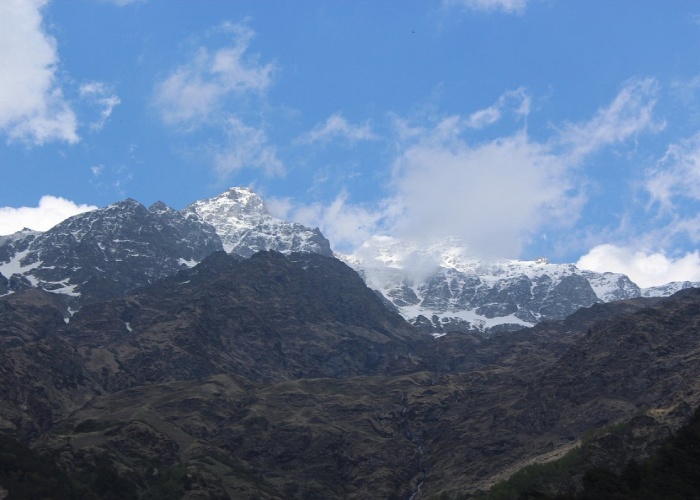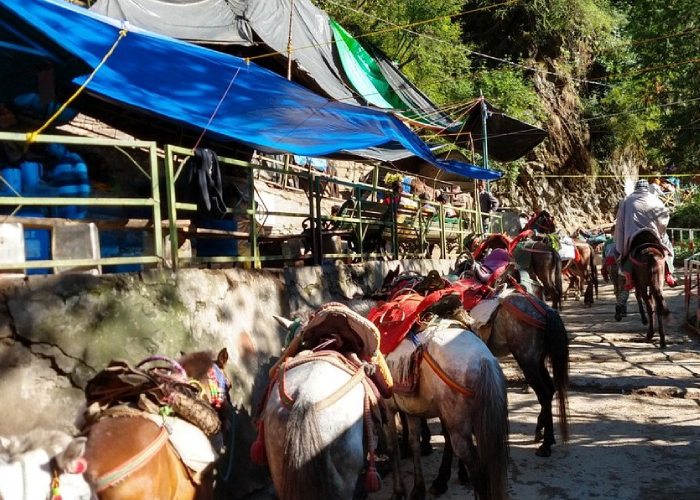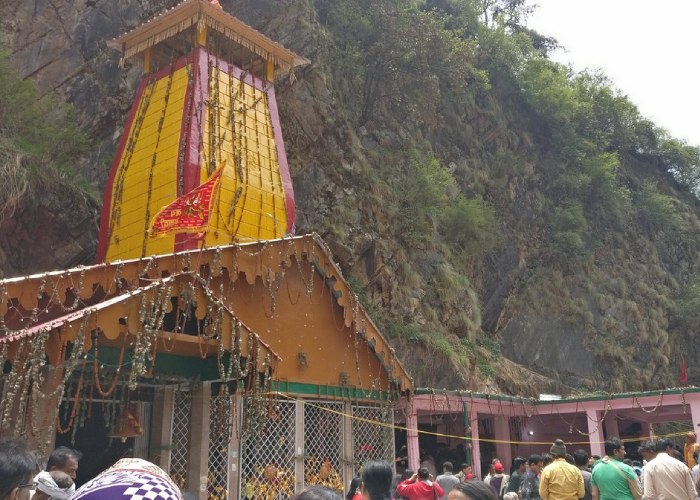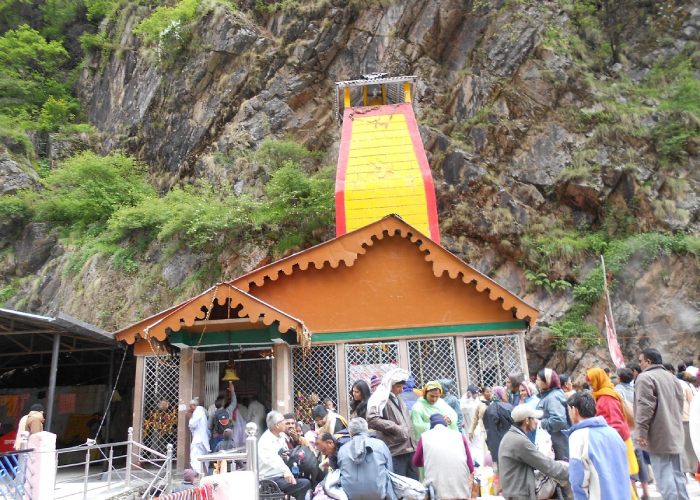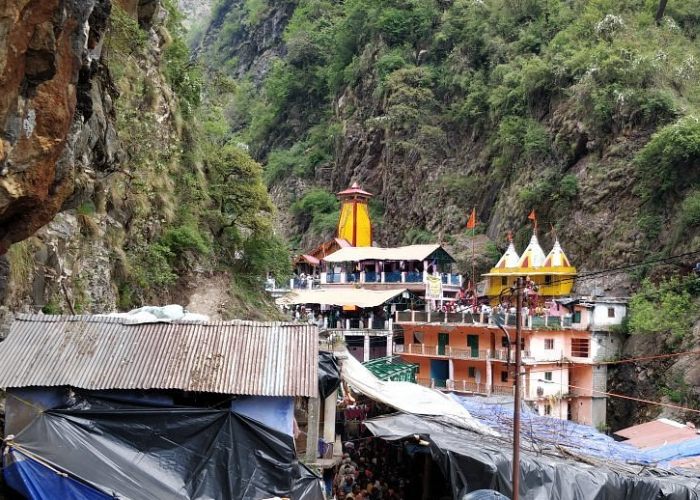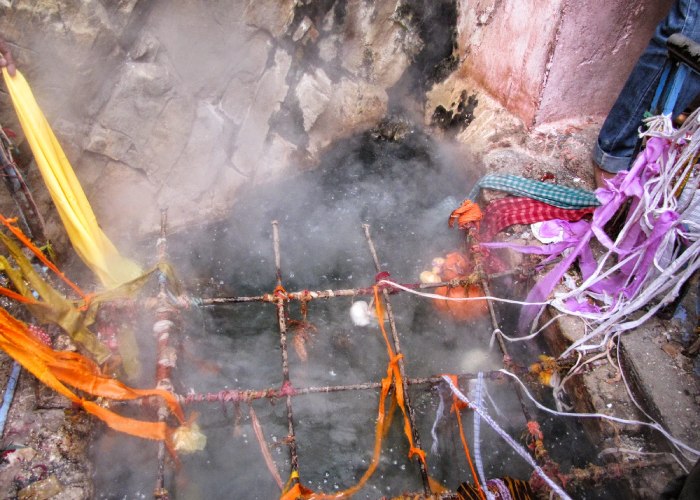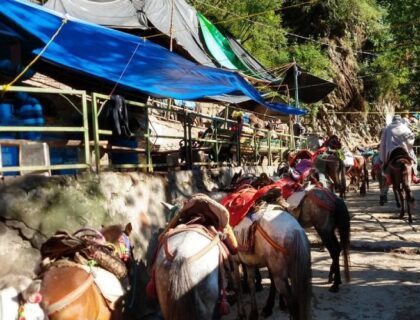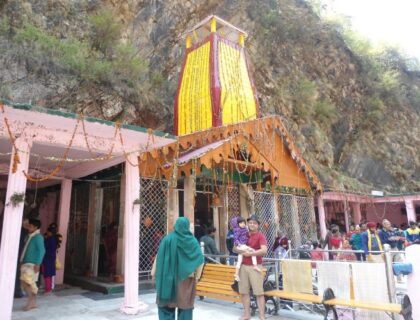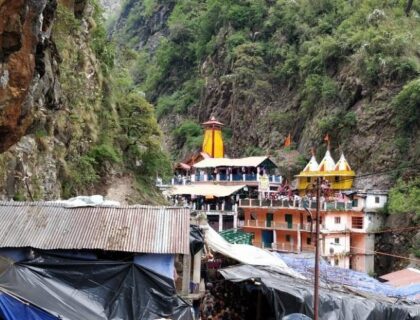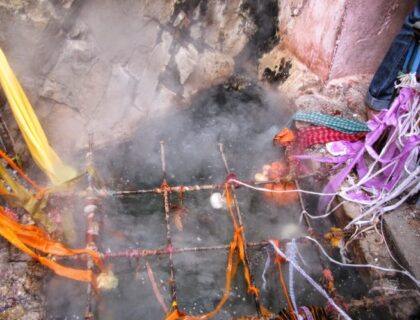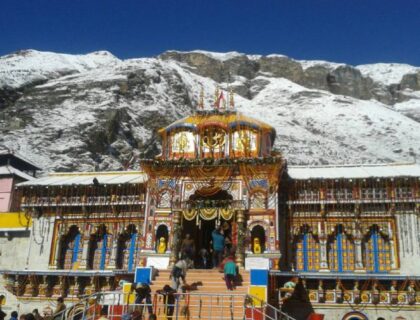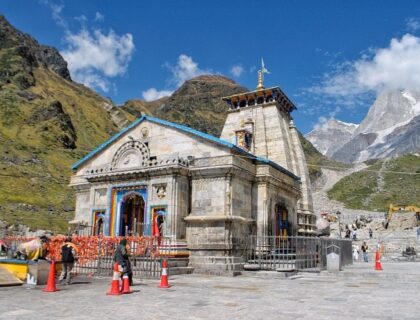Yamunotri Temple
Yamunotri Temple is located in Uttarkashi district, Uttarakhand, at an elevation of 3,291 meters in the western region of the Garhwal Himalayas. It is only 129 kilometres from Uttarkashi, the district headquarters. The temple is dedicated to Goddess Yamuna, who is represented by a black marble idol.
Yamunotri, the sister of Lord Yama, is said to be the source of the Yamuna River. Devotees take a dip in the Yamuna River, pray at the temple, and receive blessings as customary rituals. The Temple is open from May to November, but due to heavy snowfall, it is closed during the winter months.
Special Significance of Yamunotri Temple
Yamunotri Temple is one of the four most revered Hindu pilgrimages in the Himalayas, along with Gangotri, Kedarnath, and Badrinath. The small mountain hamlet attracts thousands of devotees each year and serves as the starting point for the Char Dham Yatra pilgrimage (May to October), which travels from Yamunotri to Gangotri and then to Kedarnath and Badrinath.

The Yamunotri Temple, located in a narrow gorge near the Yamuna’s source, is dedicated to the Yamuna, the second-most sacred river after the Ganges. A dip in the Yamuna River is said to protect one from death. Devotees walk or ride a palanquin or a pony from Janki Chatti to the temple (around 3,233 m above sea level), a steep 3 km trek that takes about 3 hours.
History of Yamunotri Temple
The original Yamunotri Temple is said to have been built in the 19th century by Maharani Guleria of Jaipur. However, legend has it that it was built by Maharaja Pratap Shah of Tehri Garhwal. The temple has been renovated several times due to weather and elemental damage. The historical significance of Yamunotri Dham is told in a popular legend about the sage Asit Muni, who lived here and used to bathe in the Ganges and the Yamuna River on a daily basis. He was unable to travel to Gangotri in his old age, so a Ganges stream appeared opposite Yamunotri for him.

Goddess Yamuna is also said to be Surya Dev’s (the Sun God’s) daughter and Yama’s (the God of Death’s) sister. Worshipping the Yamuna is thought to please both the Sun God and Yama.
Architecture of Yamunotri Temple
The temple opens in May and closes for the winter on Yama Dwitiya (the second day after Diwali, November). A little further ahead is the actual source of the Yamuna, which is located at an elevation of approximately 4,421 metres. Yamunotri also has two hot springs, which provide relief to tired hikers at a height of 3,292 metres (10,801 feet). Surya Kund has boiling hot water, whereas Gauri Kund has tepid bathing water. It is said that the spring water is hot enough to cook rice and potatoes.
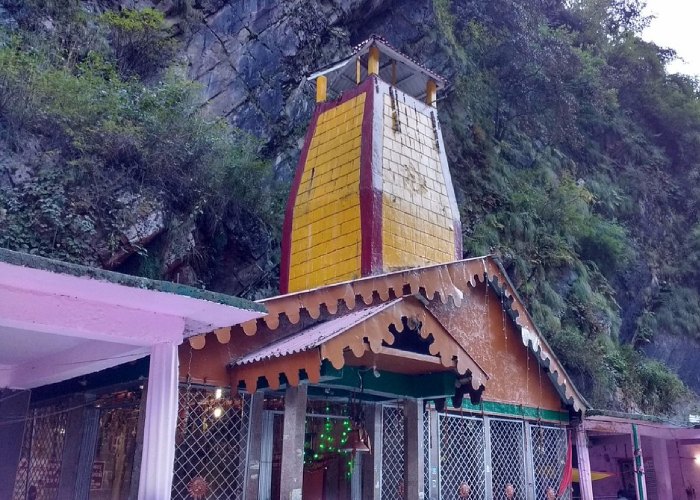
There are only a few small ashrams and guesthouses on the temple grounds. The Uniyal family of pujaris (priests) performs ritual duties such as the preparation and distribution of prasad (sanctified offerings) and the supervision of pujas (ritual venerations). Hot springs, where raw rice is cooked and made into prasad, are one of the site’s unique ritual practices.
Important Facts about Yamunotri Temple
- Yamunotri is a holy place in Uttarakhand, located on the western side of the Garhwal Himalayas in the Uttarkashi district.
- Yamunotri stands proudly at 3,293 metres above sea level, with its massive mountain peaks, glaciers, and gushing Yamuna waters.
- The River Yamuna, India’s second most sacred river, originates in Yamunotri, making it one of the pilgrimage sites in Uttarakhand’s Chota Char Dham Yatra.
- Yamuna is said to be the daughter of the Sun and the twin sister of Yama (the god of death); in Vedas, Yamuna is known as Yami (lady of life).
- A bath in Yamuna’s sanctified waters is said to cleanse all sins and protect against an untimely or painful death. Yamuna Devi (goddess) is regarded as a deity in Hinduism due to her strong associations.
- The Yamuna River flows from the Yamunotri glacier, which rises to 6,315 metres above sea level and is located against a steep slope just below the top of the Kalind peak.
- According to legend, Lord Hanuman doused the fire of his tail in the icy waters of the Yamuna at Banderpooch after burning Ravan’s Lanka. As a result, the peak is known as Bander (monkey) Pooch (tail) – monkey’s tail.
- Travelling in monsoons is not recommended due to the risk of landslides, floods and other rain-related issues.
Best Time to Visit Yamunotri Temple
Yamunotri Dham is only open to devotees for six months a year due to its high altitude location. As the snow melts and the weather improves, the portals of this sacred Hindu shrine are opened at the end of April or the beginning of May. The temple closes immediately after the Diwali festival, and its deity is relocated to Kharsali Village to be worshipped for the next six months of the winter season. As a result, the best time to visit Yamunotri is between April and November, with the best months being April to mid-June and October to mid-November.
Famous Festivals In Yamunotri Temple
- The festivals of Basant Panchami, Phool Dei and Olgia are celebrated at the Yamunotri temple apart from the other famous festivals. Phool Dei is one of the harvest festivals of Uttarakhand. Olgia is also known as Ghee Sankranti.
- Durga Puja. (Winter) – Devotees celebrate Navaratri at this temple in the month of Ashwin (Sep-Oct).
- Navaratri. (Summer) – They celebrate other Navaratri in the fortnight of the Chaitra (March-April). Every nine days they worship Navadurga (nine Durgas).
- Diwali – Diwali is one of the most admired and auspicious festivals in the town.
How to Reach Yamunotri Temple
By Air: Jolly Grant Airport, Rishikesh Road, Dehradun, is the nearest airport to Yamunotri Temple. Hire a cab or get a bus from here.
By Rail: Regular trains to Haridwar and Dehradun are available at all times of the year. Hire a cab or get a bus from here.
By Road: Motorable roads end at Janki Chatti, and it is from here that a difficult 6/5 km trek to the holy shrine of Yamuna Devi begins. To avoid the hardships of the journey, one can use ponies or palanquins. There are buses and taxis available from major cities such as Rishikesh, Dehradun, Uttarkashi, Tehri, and Barkot.
Location
Facilities
- Drinking Water
- Pooja Item Shops
- Prasad Shops
- Resting Room



